Bloomin’ Lovely – Mary-Ellen’s Marguerite Dress
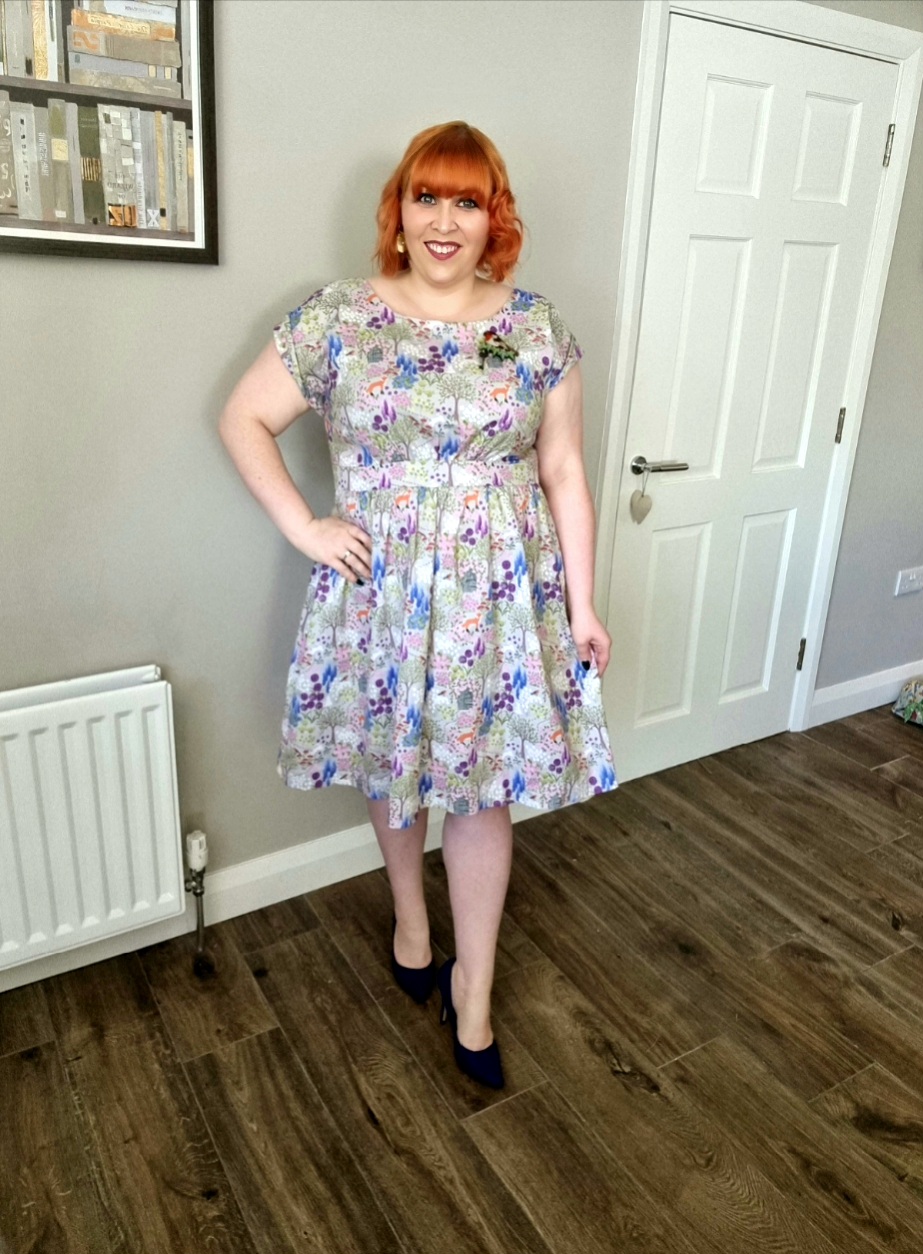
For my latest fabric ambassador make, I couldn’t resist the beautiful Lewis and Irene Secret Garden print. I have a penchant for sewing with quilting cottons for my wardrobe, which isn’t always the obvious choice of fabric for dressmakers. Quilting cottons have a lot to recommend themselves for when it comes to garment making; being medium weight (a little heavier than a poplin), it is stable and does not fray easily which makes it a brilliant fabric for beginner sewists to work with. What I love most about quilting cottons is that they are consistent in quality; no matter which quilting cotton company you buy from the quality will be consistent. When you buy a Lewis and Irene fabric, the quality will always be top notch. The fabric holds up to repeated washing and ironing, making it a sustainable fabric choice, as it will last well. It also wears well and doesn’t crease too much and has the added bonus of being breathable, making it perfect for all seasons. There is also a seemingly limitless selection of prints available; you can find a quilting cotton with pretty much anything on it. Quilting cottons are an easy way to reflect your personality in your wardrobe.
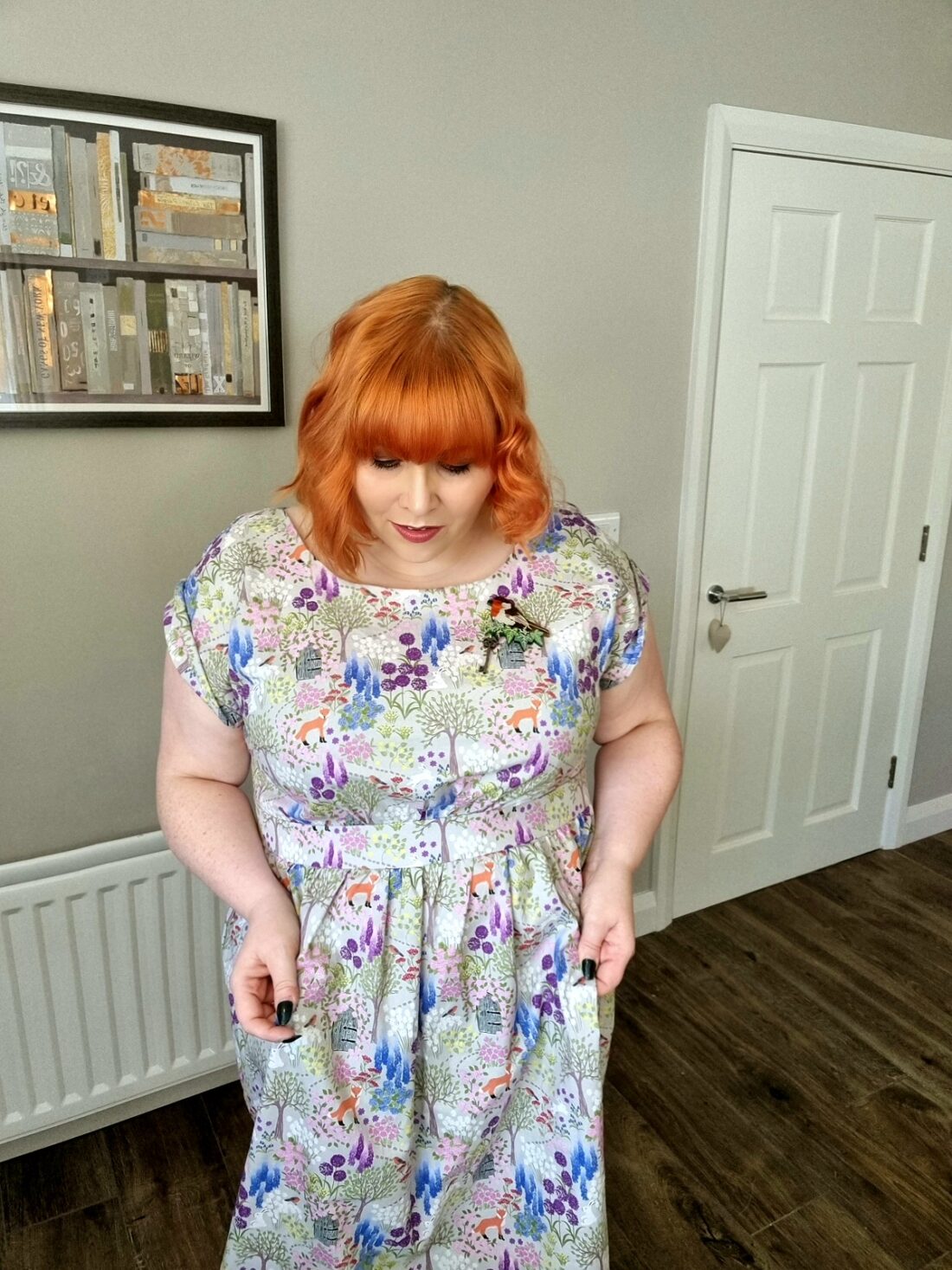
There are some top tips for sewing with quilting cotton:
- Prewash:You want to make sure all shrinkage is done before you start sewing your garment up or you’ll end up with a garment that no longer fits well after washing.
- Press: Iron out your creases before cutting as this ensures your pattern pieces are cut accurately and make good use of iron to press your seams while sewing to get a professional finish to your garment; quilt cotton is really resilient and handles steam and a hot iron really well.
- Marking: When marking your quilting cottons, they can handle most things; carbon paper, chalk, marking pens – but I would remind you to always mark on the wrong side of the fabric so that you don’t affect the print. Even an iron off or disappearing ink can leave residue sometimes; if in doubt, and you need to mark the right side of the fabric, always test it on a scrap piece of the fabric first just to be on the safe side.
- Cutting: Quilters will generally use a rotary cutter to get clean cutting lines – they’re probably the best example to follow when sewing with quilting cotton (for me, however, it’s scissors every time).
- Interfacing: Fusible lightweight interfacing is the best choice for quilting cottons – it’s what I’ve used for my facings and waistband.
- Sewing: Thread – Polyester is perfect for sewing quilting cotton as it is strong. Needle – quilting cotton is best sewn with a Universal needle (size 80/12).
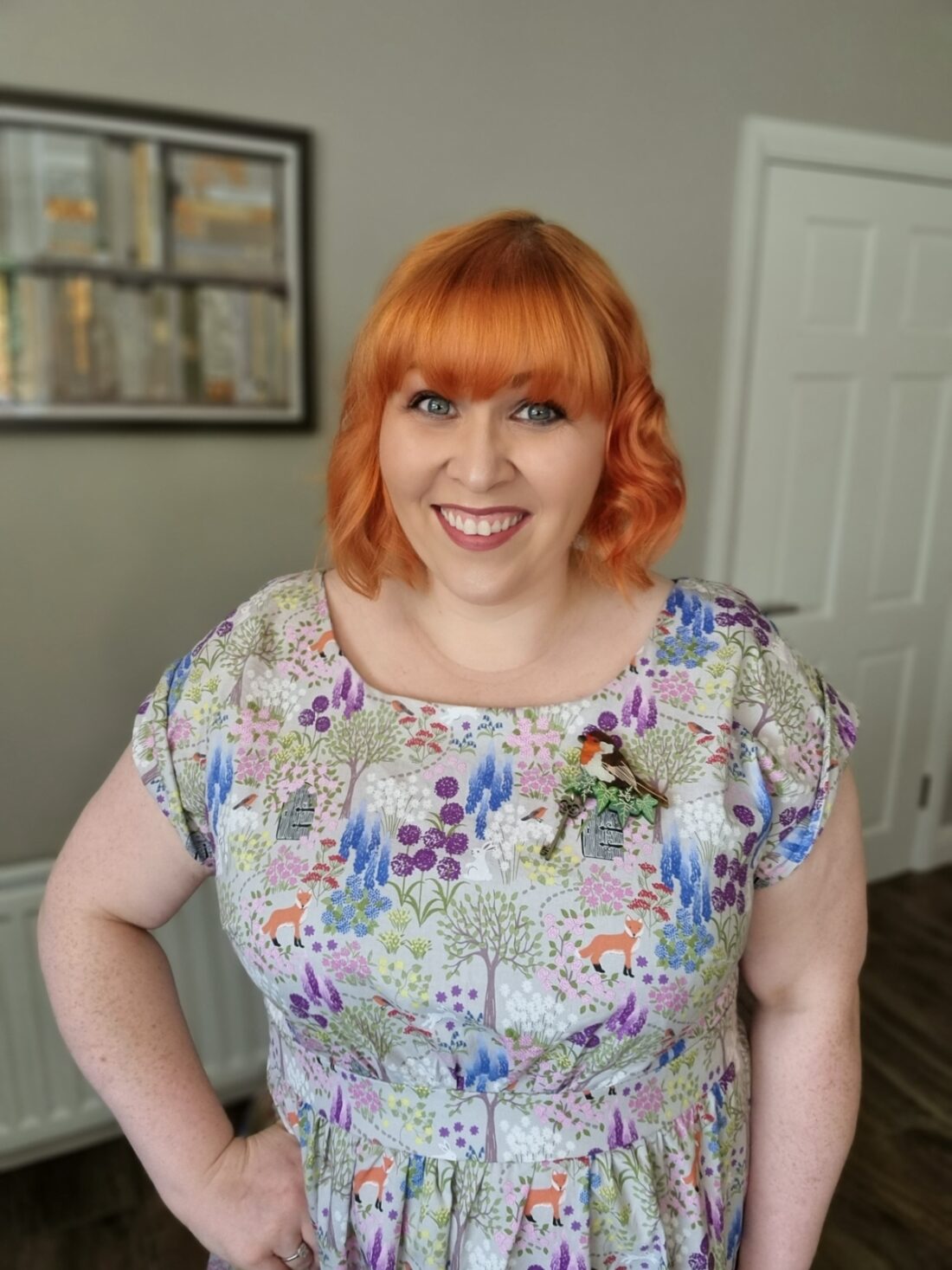
Some things to bear in mind while sewing are;
- Stay stitch: Quilting cotton might look and feel stable, but it will stretch when cut on the bias. Always stay stitch your necklines to ensure they don’t stretch. This is just good practice: I stay stitch even when the pattern doesn’t instruct me to.
- Under stitch: This is also an invaluable technique to bring to sewing garments in general, particularly on necklines. If you find that your facing is ever popping out, it may well be because you have not under-stitched.
- Watch your grainline: Quilting cotton prints are literally printed on to the fabric so the patterns may not necessarily line up with the grainline of your fabric.
For me, one of the most amazing things about sewing is that there is two-pronged act of creativity at play when we make our own clothes. When we sew, we express our creativity in our choices of colours, prints and patterns. It’s a form of art to make wearable garments. What’s more, when we wear those creations, we express who we are to everyone who sees them. Our choice of clothes says a lot about who we are as individuals. As Marc Jacobs rightly said: “Clothing is a form of self-expression – there are hints about who you are in what you wear”.
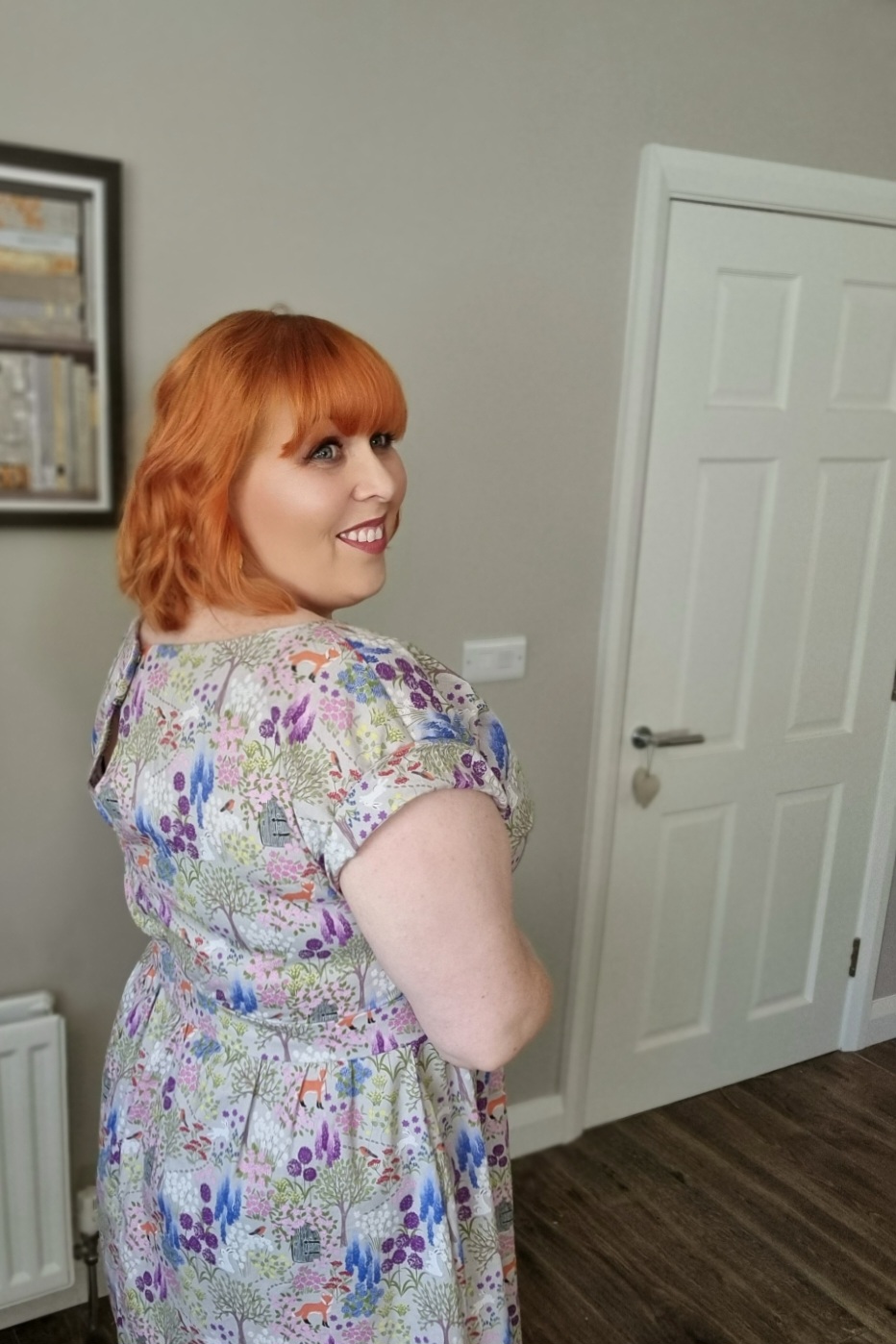 This Lewis and Irene Secret Garden print spoke to me on two levels; firstly, the quality of the fabric and the prettiness of the design but also because it appealed to the nostalgia for my childhood – The Secret Garden was one of my favourite books as a child and Lewis and Irene have captured the spirit of the novel (and the little animal characters) so well.
This Lewis and Irene Secret Garden print spoke to me on two levels; firstly, the quality of the fabric and the prettiness of the design but also because it appealed to the nostalgia for my childhood – The Secret Garden was one of my favourite books as a child and Lewis and Irene have captured the spirit of the novel (and the little animal characters) so well.
In terms of the pattern I used, I decided to make one of my tried-and-true patterns – at least, it was a T&T before I got pregnant – it’s been a year and a half since I last made it so I did have to make a crucial adjustment to the pattern and grade out a size at the waist! The Sew Over It Marguerite is a beautiful dress, a ringer for the dresses worn by Charlotte Le Bon in the film The Hundred Foot journey from which the pattern gets its name.
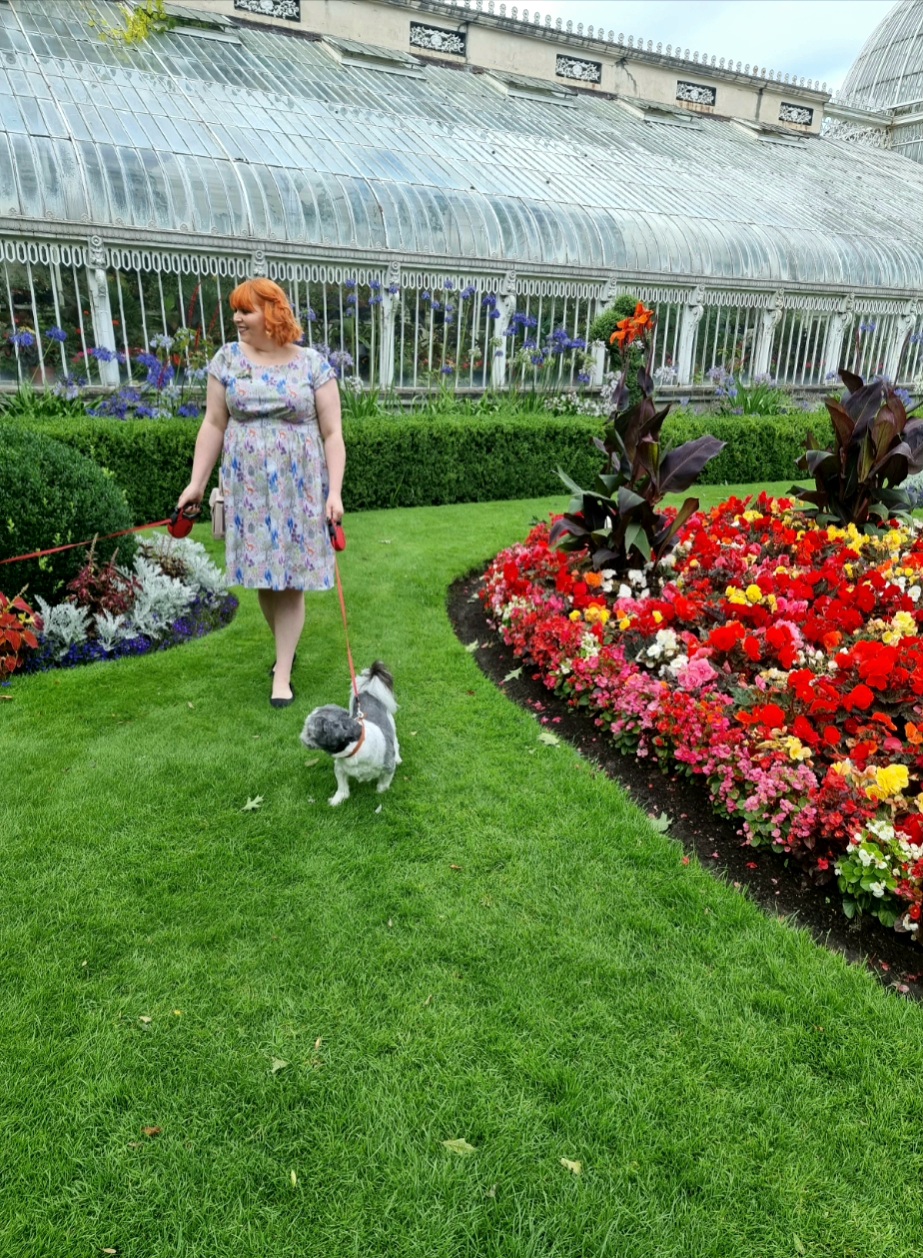
For the Marguerite dress, the shape is in the details. Most of the shaping work is done by gathering, except for bust darts, making it a good pattern for sewing up busier prints – it has become one of my go to dress patterns for directional prints. The only real interruption in the dress is the waistband. The style of the dress – the semi fitted bodice and dolman cuffed sleeves – makes this a really easy pattern to fit, too. I would recommend this even to people staring out on their dressmaking journey.
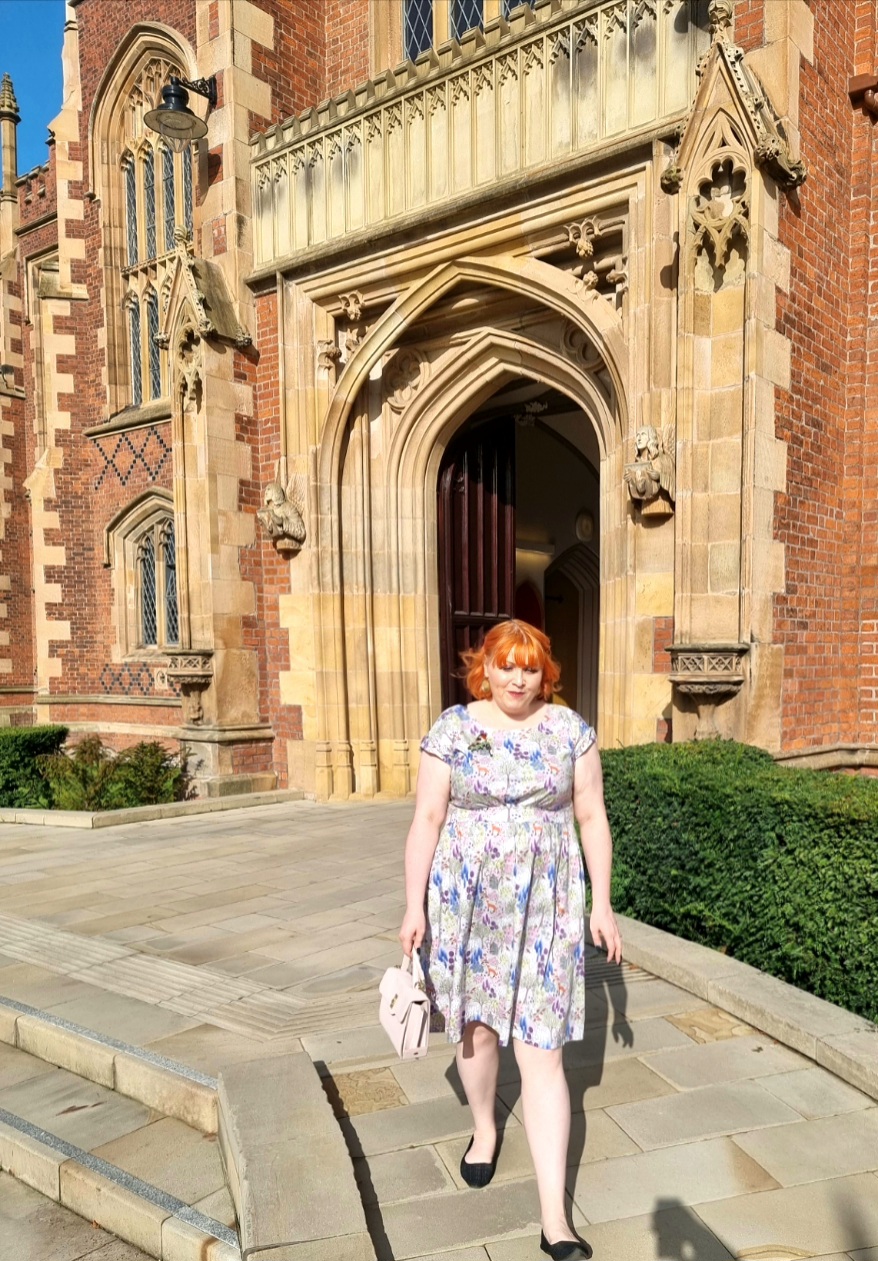
Marguerite was a good choice of pattern for quilting cotton because it can be cut for 44” fabrics; as an aside, this pattern requires 3.4m of fabric this width but I got this dress cut out in just 2.5 metres with a little placement care – I did leave out the pockets and my inner waistband is in a different fabric. Most vintage (and vintage inspired) patterns need wider fabrics to get full skirts, but a gathered skirt is a good option for craft cottons.
Hopefully you’re convinced that quilting cotton deserves a place in your wardrobe!
Happy sewing,
Mary-Ellen